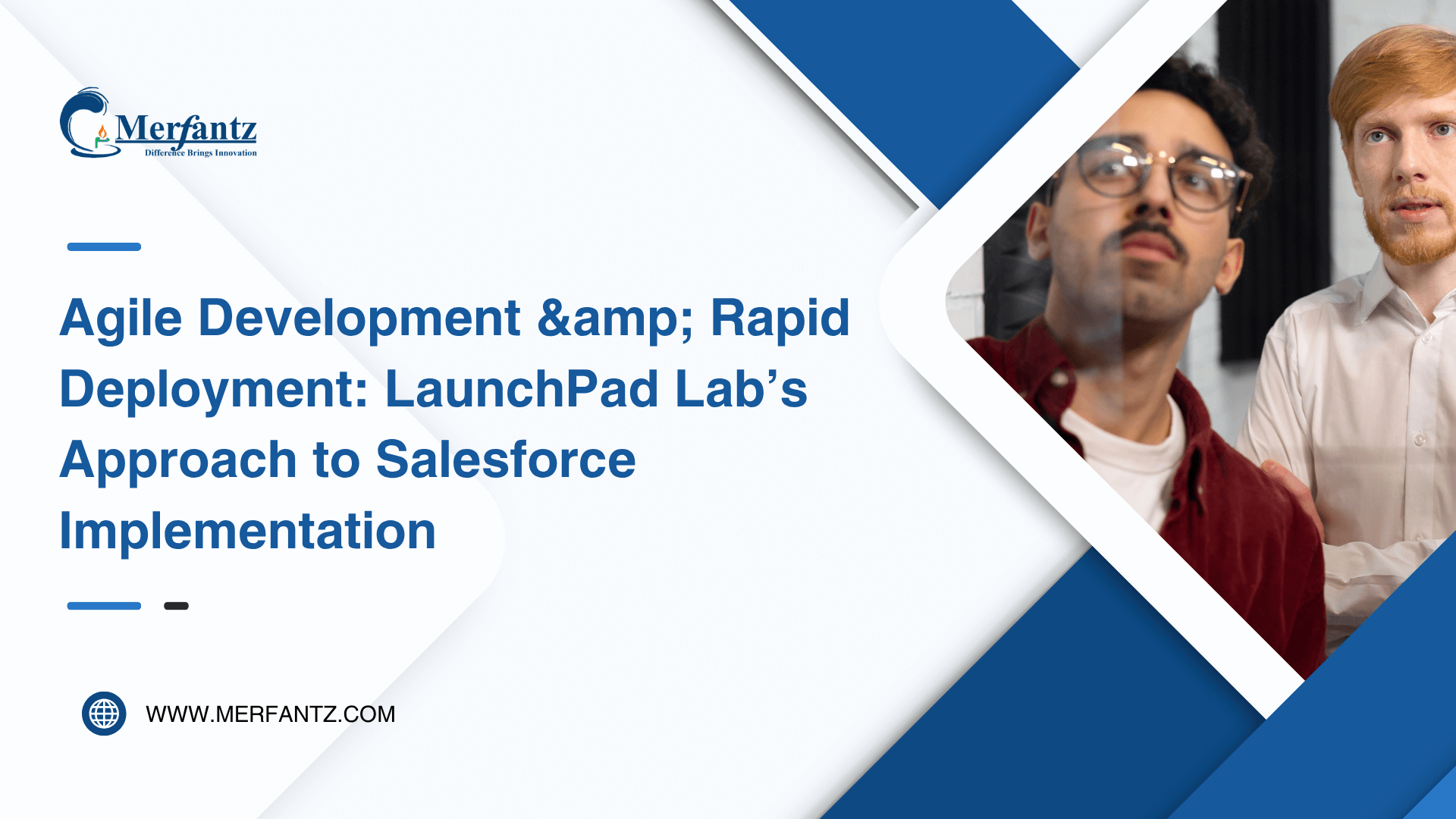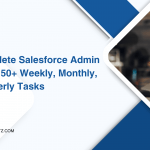
Did you know 37% of CRM initiatives fail due to poor coordination between teams? Even more startling: businesses using rigid project methods face up to 70% higher costs compared to adaptive strategies. These numbers reveal a critical gap in how companies handle complex software rollouts.

Traditional workflows often crumble under pressure when managing dynamic platforms. Missed deadlines, budget overruns, and misaligned goals plague projects that lack flexibility. Research shows teams using iterative frameworks complete tasks 28% faster while maintaining clearer communication channels.
LaunchPad Lab’s methodology tackles these challenges head-on. Their strategy blends collaborative planning with phased delivery cycles, ensuring stakeholders stay aligned at every stage. This approach reduces risks by prioritizing real-time feedback over fixed blueprints.
Key Takeaways
- 70% of CRM projects exceed budgets with outdated management styles
- Iterative methods slash failure rates to under 10%
- Cross-team alignment is the top predictor of software success
- Modular deployment accelerates user adoption by 40%
- Continuous testing identifies issues 3x faster than waterfall models
Introduction to Agile Development in Salesforce
Why do some companies deploy CRM features three times faster than others? The answer lies in adopting workflows built for change. Modern platforms demand strategies that evolve alongside business needs, not rigid plans that gather dust.
Understanding the Agile Mindset
Traditional project management often feels like building a bridge without checking the river’s flow. Iterative frameworks flip this script. Teams work in short cycles called sprints, focusing on actionable feedback over lengthy documentation. This creates space to adjust features as user requirements shift.
Why Agile Suits Salesforce Projects
CRM systems thrive when they mirror real-world customer interactions. The platform’s modular design allows teams to test ideas quickly and refine them based on stakeholder input. Regular updates align perfectly with time-boxed development phases, turning theoretical concepts into working solutions faster.
Organizations adopting these practices report 40% fewer communication gaps between departments. By prioritizing collaboration, teams turn potential roadblocks into opportunities for improvement. The result? Solutions that grow smarter with each iteration.
Agile Salesforce implementation: Key Concepts and Benefits
What separates high-performing CRM projects from those that struggle? Teams using iterative methods report 40% fewer delays and deliver features that better match user needs. This approach thrives on collaboration and adaptability rather than rigid timelines.
Core Principles Driving Success
Four foundational ideas power this methodology:
- Short sprints: 59% of teams use 2-week cycles to maintain momentum
- Client collaboration: Weekly check-ins ensure alignment
- Modular delivery: Features launch in functional batches
- Flexible roadmaps: Adjust priorities as needs evolve
Proven Results in Real Projects
Companies adopting these strategies see measurable improvements:
- 37% faster feature deployment than traditional methods
- 16% productivity boost through focused sprints
- 83% of users report better system alignment with goals
These outcomes stem from continuous feedback loops and data-driven adjustments. Teams pivot quickly when requirements change, keeping projects on track without sacrificing quality.
Setting Up an Agile Environment for Salesforce Projects
How do top-performing teams consistently deliver CRM solutions ahead of schedule? The answer lies in crafting an environment where skilled professionals and smart tools work in harmony. Let’s explore how to assemble the right mix of talent and technology.
Building a Cross-Functional Team
Effective teams require three key roles working together. The Product Owner shapes the project vision and prioritizes tasks based on business value. A dedicated Process Facilitator keeps workflows smooth by removing roadblocks and fostering communication. Technical execution falls to a versatile group of developers, architects, and specialists who turn plans into functional solutions.

This structure ensures all perspectives get heard – from big-picture strategy to granular technical details. Organizations using this model report 33% fewer miscommunications compared to siloed teams.
Leveraging Native Platform Tools
Built-in solutions like Inspire Planner simplify project management without leaving your CRM environment. Teams can:
- Organize tasks using visual Kanban boards
- Track progress across sprints in real-time
- Manage backlogs alongside customer data
These tools reduce context-switching by keeping everything in one place. Developers spend 28% less time navigating between platforms when using integrated systems. The result? Faster delivery cycles and clearer alignment across departments.
Successful environments blend human expertise with technical efficiency. By combining focused teams with purpose-built tools, organizations create the foundation for repeatable success in complex CRM projects.
Comparing Traditional and Agile Methodologies for CRM
Outdated methods often lead to wasted resources and missed opportunities in CRM deployments. Teams using rigid frameworks frequently discover their plans don’t match real-world needs halfway through projects. This mismatch creates costly reworks and frustrated stakeholders.
Limitations of Traditional Approaches
Waterfall methodologies follow strict linear phases, like building a house from blueprints that can’t be altered. Once development starts, teams can’t easily adjust to new requirements. Issues often surface late, forcing expensive changes when budgets are drained.
Common pain points include:
- Months-long gaps between planning and user testing
- Final products that miss evolving business goals
- Communication breakdowns across departments
Advantages of Iterative Processes
Flexible frameworks thrive on continuous improvement. Teams deliver functional components every 2-3 weeks, gathering feedback that shapes the next phase. This approach turns potential roadblocks into opportunities for refinement.
Key benefits include:
- 45% faster response to market shifts
- 30% reduction in post-launch fixes
- Stronger alignment between technical and business teams
Organizations adopting these practices report better ROI through adaptive delivery timelines. By embracing change rather than resisting it, teams create solutions that grow more valuable over time.
Best Practices for Agile Salesforce Implementation
What do 89% of successful CRM projects have in common? They follow structured frameworks that adapt to evolving needs. Clear processes turn complex requirements into measurable results while keeping teams aligned.
Implementing User Stories and Sprints
User stories transform vague ideas into actionable tasks. Teams outline features using simple templates: “As [role], I need [function] to achieve [outcome].” This method clarifies priorities and connects technical work to business goals.
Effective sprint planning focuses on three elements:
- Goal alignment: Match tasks to quarterly objectives
- Capacity mapping: Balance workloads across team members
- Progress tracking: Use visual boards for transparency
Two-week cycles strike the right balance between momentum and flexibility. Daily check-ins resolve blockers quickly, while end-of-sprint reviews validate outcomes against original targets.
Ensuring Regular Client Feedback
Continuous input prevents costly misalignment. Schedule weekly walkthroughs where stakeholders test new features and suggest improvements. Teams that gather insights early reduce rework by 52% compared to late-stage reviews.
Build feedback loops into every phase:
- Collaborative planning sessions set expectations
- Mid-sprint demos showcase works-in-progress
- Retrospectives identify process improvements
This approach turns clients into active partners rather than passive observers. Solutions stay relevant as market conditions shift, delivering lasting value beyond initial launches.
Rapid Deployment Strategies for Salesforce
How can teams deploy updates 50% faster without sacrificing stability? The secret lies in pairing smart scheduling with platform-aware execution. Strategic timing turns potential conflicts into opportunities for seamless progress.

Sprint Planning and Time-Boxing
Effective teams break work into focused 10-14 day cycles. Daily standups track progress while keeping discussions action-oriented. Time-boxing ensures tasks stay manageable by setting strict limits for each activity phase.
Three techniques maximize results:
- Priority stacking: Group related tasks to minimize context switching
- Buffer blocks: Reserve 15% of sprint time for unexpected adjustments
- Progress visualization: Use burn-down charts to spot delays early
Aligning with Release Cycles
Platform updates occur three times yearly – teams must sync their roadmaps accordingly. Schedule major feature launches at least two weeks before scheduled releases. This prevents overlap and allows thorough testing.
Key coordination strategies include:
- Mapping development phases to the platform’s calendar
- Creating parallel testing environments for new features
- Conducting pre-release compatibility checks
Organizations using these methods report 68% fewer deployment conflicts. By working with the platform’s rhythm rather than against it, teams maintain momentum while reducing technical debt.
Implementing Agile in Complex CRM Projects
42% of enterprise teams report environment conflicts when scaling CRM solutions. Complex systems demand structured yet adaptable workflows to maintain progress across interconnected components. Let’s explore how to keep multiple teams aligned while addressing technical hurdles.
Orchestrating Development Environments
Effective teams use a tiered approach to manage changes:
- Developer sandboxes for isolated feature testing
- Shared Partial Copy spaces for integration checks
- Full Copy staging areas for final validation
This layered strategy prevents configuration clashes. Teams using this method resolve environment issues 58% faster than those relying on single testing zones.
Solving Integration Puzzles
Common technical challenges in large projects include:
- Legacy system compatibility checks
- API call limit management
- Data mapping inconsistencies
Proactive teams address these issues early through:
- Weekly architecture reviews
- Automated regression testing
- Cross-team dependency mapping
Organizations adopting these practices see 67% fewer deployment delays. By breaking complex requirements into focused sprints, teams maintain momentum while ensuring system stability.
Tools and Technologies for Agile Salesforce Development
The right toolkit can transform how teams build and refine customer solutions. Native apps designed for the platform eliminate data silos while keeping workflows within a single interface. This streamlined approach helps developers focus on solving problems rather than managing disjointed systems.
Inspire Planner and Other Native Apps
Inspire Planner stands out with its 140+ five-star AppExchange reviews. This fully integrated software simplifies complex projects through:
- Visual Kanban boards for task organization
- Automated sprint planning templates
- Real-time progress dashboards
Teams link user stories directly to customer records like Accounts or Cases, maintaining context throughout development cycles. Native tools reduce training time since everyone works within familiar layouts.
Complementary technologies boost efficiency further:
- Version control systems track code changes
- Automated testing frameworks catch errors early
- CI/CD pipelines enable rapid feature deployment
When choosing tools, consider team size and project scope. Smaller groups might prioritize ease of use, while enterprise teams need advanced customization. Emerging trends like AI-assisted coding hint at faster iteration speeds ahead.
Integrating Agile and Traditional Methodologies in Salesforce
Can hybrid frameworks outperform rigid process models? Many teams now blend iterative and structured approaches to match project needs. This flexibility proves valuable when handling diverse requirements across large organizations.
Traditional methods shine in scenarios demanding strict compliance or fixed outcomes. Highly regulated industries often benefit from phased planning. Legacy system integrations also thrive with predictable timelines and clear documentation.
Modern tools like Inspire Planner simplify mixed-methodology work. Teams maintain consistent processes while choosing the right approach for each task. Visual boards track waterfall milestones alongside sprint goals, creating unified progress reports.
Successful coordination requires three steps:
- Define clear handoff points between phased and iterative work
- Schedule cross-team syncs to align priorities
- Use shared dashboards to monitor dependencies
This balanced strategy lets organizations leverage Agile Salesforce strengths without abandoning proven practices. The result? Solutions that adapt to complexity while delivering measurable outcomes.
FAQ
How does an iterative approach improve CRM projects?
What tools support efficient sprint planning for CRM platforms?
Can traditional project management coexist with modern frameworks?
Why is cross-functional collaboration critical for CRM success?
How do user stories simplify complex system integrations?
What strategies prevent delays during rapid deployments?
How often should clients review progress in dynamic projects?
Author Bio
Co-Founder & CMO at Merfantz Technologies Pvt Ltd | Marketing Manager for FieldAx Field Service Software | Salesforce All-Star Ranger and Community Contributor | Salesforce Content Creation for Knowledge Sharing





